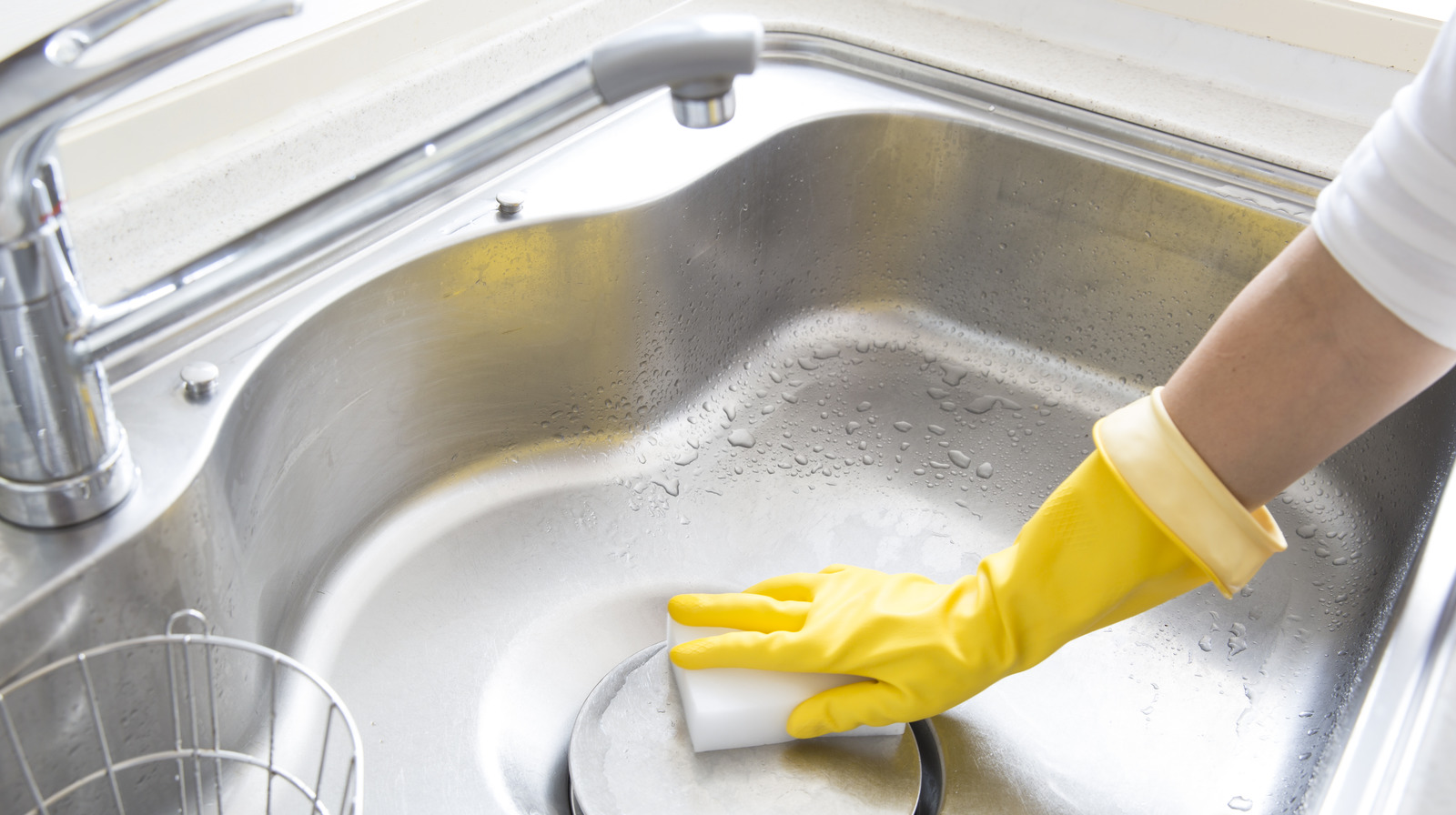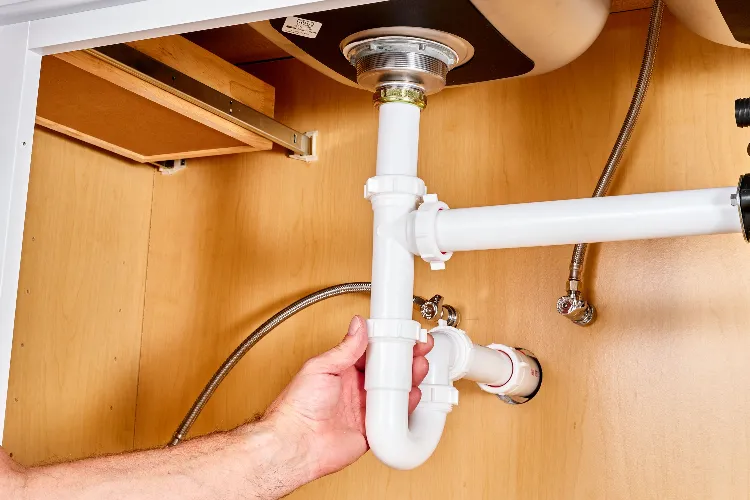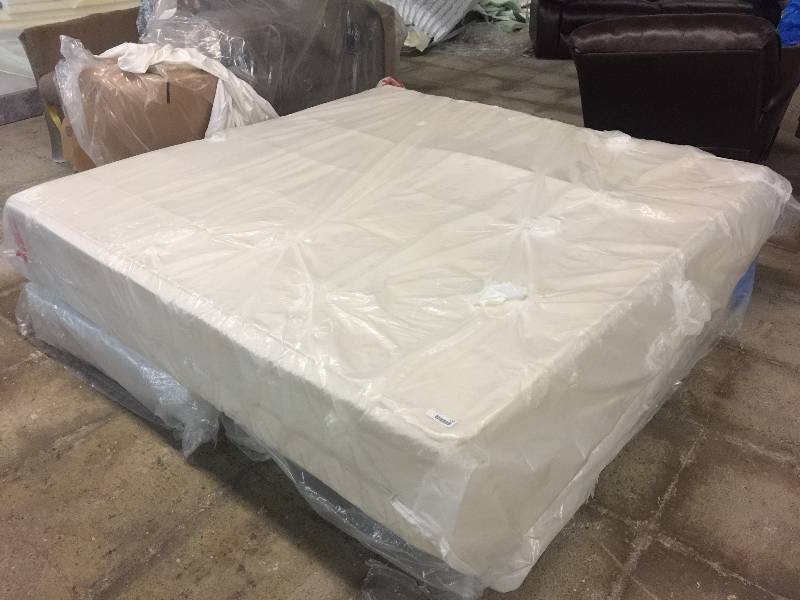Keeping your kitchen sink strainer clean is essential for maintaining good hygiene in your kitchen. Over time, food particles, grease, and other debris can build up in the strainer, causing unpleasant odors and potential clogs. Regularly cleaning your kitchen sink strainer is a simple task that can make a big difference in the cleanliness and functionality of your sink. Here's how to do it: Step 1: Remove the strainer from your sink by twisting it counterclockwise. If it's difficult to remove, use a pair of pliers to grip and twist it off. Step 2: Use a paper towel or old toothbrush to remove any visible debris from the strainer. Bonus tip: For tough stains, soak the strainer in a solution of hot water and baking soda for 30 minutes before scrubbing. Step 3: Fill a large bowl or sink with hot water and add a few drops of dish soap. Place the strainer in the water and let it soak for 10-15 minutes. Step 4: Use a scrub brush or sponge to scrub the strainer, paying extra attention to the crevices where food particles can get trapped. Rinse the strainer thoroughly with hot water. Step 5: For a deeper clean, mix equal parts vinegar and hot water in a bowl or sink and let the strainer soak for 15-20 minutes. The vinegar will help to dissolve any buildup and eliminate odors. Step 6: Rinse the strainer with hot water and dry it with a clean towel before placing it back in your sink.1. How to Clean a Kitchen Sink Strainer
Prevention is key when it comes to keeping your kitchen sink strainer clean. By taking a few simple steps, you can minimize the buildup of food particles and debris in your strainer, making it easier to clean in the long run. Here are some tips for maintaining a clean kitchen sink strainer: 1. Scrape off excess food: Before rinsing your dishes in the sink, be sure to scrape off any excess food into the trash. This will prevent large pieces of food from getting stuck in your strainer. 2. Use a sink strainer: Placing a sink strainer over your kitchen drain can help to catch larger food particles and prevent them from getting into your sink strainer. 3. Run hot water: After using your sink, run hot water for a few minutes to help flush out any remaining food particles. 4. Regularly clean: Make a habit of cleaning your kitchen sink strainer at least once a week to prevent buildup and odors.2. Best Ways to Keep Your Kitchen Sink Strainer Clean
If you prefer to use natural cleaners in your home, there are several options for cleaning your kitchen sink strainer. Not only are these cleaners better for the environment, but they are also gentle on your strainer and won't cause any damage. Here are some DIY natural cleaners you can make at home: 1. Baking soda and lemon: Mix equal parts baking soda and lemon juice to create a paste. Apply the paste to your strainer and let it sit for 10-15 minutes before scrubbing and rinsing with hot water. 2. Vinegar and water: Mix equal parts vinegar and water in a spray bottle. Spray your strainer and let it sit for 15-20 minutes before scrubbing and rinsing with hot water. 3. Salt and vinegar: Mix 1/4 cup of salt with 1/4 cup of vinegar to create a paste. Apply the paste to your strainer and let it sit for 10-15 minutes before scrubbing and rinsing with hot water.3. DIY Natural Cleaners for Kitchen Sink Strainer
Despite your best efforts, tough stains can still occur on your kitchen sink strainer. Fortunately, there are a few tricks you can try to remove them: 1. Use a toothbrush: A toothbrush is small enough to reach into the crevices of your strainer and scrub away tough stains. 2. Try a magic eraser: Magic erasers are great at removing tough stains without the use of harsh chemicals. Wet the eraser and gently scrub the stained areas of your strainer. 3. Use a mixture of baking soda and vinegar: As mentioned before, this magical combination works wonders on tough stains. Let it sit on the stain for 30 minutes before scrubbing and rinsing with hot water.4. Tips for Removing Tough Stains from Kitchen Sink Strainer
Regularly cleaning your kitchen sink strainer is crucial for maintaining a clean and functional kitchen. Not only does it prevent unpleasant odors, but it also ensures that your sink drains properly without any clogs. Neglecting to clean your strainer can lead to a buildup of bacteria and mold, which can be harmful to your health. By making it a part of your cleaning routine, you can avoid these issues and keep your kitchen sink strainer in top condition.5. The Importance of Regularly Cleaning Your Kitchen Sink Strainer
In addition to removing visible debris and stains, it's important to disinfect your kitchen sink strainer regularly. This is especially important if you use your sink to wash raw meat or other potentially harmful foods. Here's how to disinfect your kitchen sink strainer: 1. Use hot water: Hot water is a great natural disinfectant. Run hot water over your strainer for a few minutes to help kill any bacteria. 2. Use a bleach solution: Mix 1 tablespoon of bleach with 1 quart of hot water. Let your strainer soak in the solution for 15 minutes before rinsing thoroughly with hot water. 3. Use a commercial disinfectant: If you prefer to use a store-bought disinfectant, choose one that is safe for kitchen surfaces and follow the instructions on the label.6. How to Disinfect Your Kitchen Sink Strainer
Keeping your kitchen sink strainer clean doesn't have to be a daunting task. With these simple hacks, you can make the cleaning process easier and more efficient: 1. Use a toothpick: A toothpick is a great tool for removing small particles of food from your strainer that may be difficult to reach with a brush or sponge. 2. Soak overnight: If your strainer is particularly dirty, consider letting it soak in a solution of hot water and dish soap overnight. This will make it easier to clean in the morning. 3. Use a garbage disposal cleaner: If your sink has a garbage disposal, consider using a disposal cleaner to keep it clean and fresh. This will help to prevent any odors from coming up through your strainer.7. Simple Hacks for Maintaining a Clean Kitchen Sink Strainer
One of the main reasons for cleaning your kitchen sink strainer is to prevent clogs in your sink. Here are some tips for preventing clogs in the first place: 1. Avoid pouring grease down the drain: Grease can solidify and cause clogs in your sink. Instead, dispose of it in the trash. 2. Use a sink strainer: As mentioned earlier, using a sink strainer can help to catch food particles and prevent them from getting into your strainer. 3. Run hot water: After using your sink, run hot water for a few minutes to help flush out any remaining debris.8. How to Prevent Clogs in Your Kitchen Sink Strainer
While DIY cleaners can be effective, sometimes you may want to use a commercial product for an extra deep clean. Here are some of the best products for cleaning your kitchen sink strainer: 1. Bar Keepers Friend: This all-purpose cleaner is great for removing tough stains and buildup on your strainer. 2. Glisten Disposer Care Cleaner: This cleaner is specifically designed for cleaning garbage disposals and can also be used to clean the sink strainer. 3. CLR Kitchen & Bath Cleaner: This multi-purpose cleaner is great for removing tough stains and disinfecting your kitchen sink strainer.9. The Best Products for Cleaning Your Kitchen Sink Strainer
The frequency of cleaning your kitchen sink strainer may vary depending on how often you use your sink and the types of food you prepare. However, as a general rule, it's recommended to clean your strainer at least once a week to prevent buildup and maintain good hygiene in your kitchen. If you notice any foul odors or visible debris, it's best to clean your strainer immediately. In conclusion, regularly cleaning your kitchen sink strainer is essential for maintaining a clean and functional kitchen. With these tips and tricks, you can easily keep your strainer in top condition without the use of harsh chemicals. So, don't neglect this important task and add it to your cleaning routine today!10. How Often Should You Clean Your Kitchen Sink Strainer?
Clean Kitchen Sink Strainer for a Sparkling Kitchen

Maintaining a clean and hygienic kitchen is essential for a healthy home.
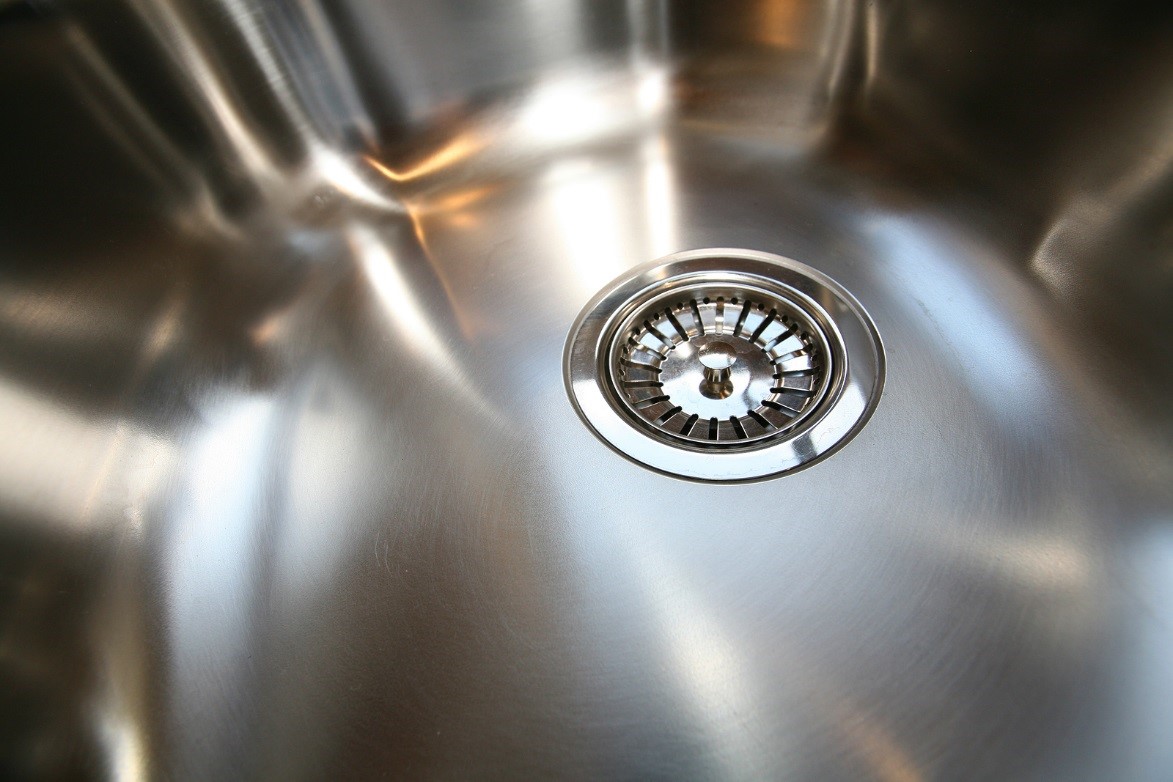 When it comes to keeping your kitchen spotless, one often overlooked area is the kitchen sink strainer. This small but mighty tool plays a crucial role in preventing food scraps and debris from clogging your pipes. However, without proper cleaning, it can become a breeding ground for bacteria and unpleasant odors. In this article, we will discuss the importance of cleaning your kitchen sink strainer and provide you with a simple and effective method to keep it sparkling clean.
Why is it important to clean your kitchen sink strainer?
As mentioned earlier, the kitchen sink strainer collects food scraps and debris, preventing them from going down the drain. Over time, these particles can build up and create a foul odor. Additionally, bacteria can thrive in this environment, posing a risk to your health. Regularly cleaning your kitchen sink strainer will not only eliminate unpleasant smells but also ensure a hygienic kitchen.
The best way to clean your kitchen sink strainer
Cleaning your kitchen sink strainer is a quick and easy task that should be done at least once a week. To start, remove the strainer from the sink and discard any visible food scraps. Then, fill a large pot or bucket with hot water and add a few tablespoons of baking soda. Submerge the strainer in the solution and let it soak for about 10-15 minutes. Baking soda is a natural and gentle cleaning agent that will help break down any stubborn residue and eliminate odors.
After soaking, use an old toothbrush to scrub the strainer, paying extra attention to the small holes. Rinse the strainer with hot water and dry it with a clean cloth.
Pro tip:
For a deeper clean, you can also use white vinegar instead of water and baking soda. The acidity of the vinegar will help dissolve any grease and grime.
Additional tips for a clean kitchen sink strainer
- Avoid putting large food scraps down the drain to prevent clogging the strainer.
- To prevent rust and corrosion, make sure to dry the strainer thoroughly after each use.
- Consider investing in a mesh sink strainer to catch smaller particles and make cleaning easier.
In conclusion, a clean kitchen sink strainer is crucial for maintaining a hygienic and pleasant kitchen. With the simple method mentioned above, you can easily keep your strainer sparkling clean and free from bacteria. Make it a part of your weekly cleaning routine, and you'll never have to worry about foul odors or clogged pipes. Happy cleaning!
When it comes to keeping your kitchen spotless, one often overlooked area is the kitchen sink strainer. This small but mighty tool plays a crucial role in preventing food scraps and debris from clogging your pipes. However, without proper cleaning, it can become a breeding ground for bacteria and unpleasant odors. In this article, we will discuss the importance of cleaning your kitchen sink strainer and provide you with a simple and effective method to keep it sparkling clean.
Why is it important to clean your kitchen sink strainer?
As mentioned earlier, the kitchen sink strainer collects food scraps and debris, preventing them from going down the drain. Over time, these particles can build up and create a foul odor. Additionally, bacteria can thrive in this environment, posing a risk to your health. Regularly cleaning your kitchen sink strainer will not only eliminate unpleasant smells but also ensure a hygienic kitchen.
The best way to clean your kitchen sink strainer
Cleaning your kitchen sink strainer is a quick and easy task that should be done at least once a week. To start, remove the strainer from the sink and discard any visible food scraps. Then, fill a large pot or bucket with hot water and add a few tablespoons of baking soda. Submerge the strainer in the solution and let it soak for about 10-15 minutes. Baking soda is a natural and gentle cleaning agent that will help break down any stubborn residue and eliminate odors.
After soaking, use an old toothbrush to scrub the strainer, paying extra attention to the small holes. Rinse the strainer with hot water and dry it with a clean cloth.
Pro tip:
For a deeper clean, you can also use white vinegar instead of water and baking soda. The acidity of the vinegar will help dissolve any grease and grime.
Additional tips for a clean kitchen sink strainer
- Avoid putting large food scraps down the drain to prevent clogging the strainer.
- To prevent rust and corrosion, make sure to dry the strainer thoroughly after each use.
- Consider investing in a mesh sink strainer to catch smaller particles and make cleaning easier.
In conclusion, a clean kitchen sink strainer is crucial for maintaining a hygienic and pleasant kitchen. With the simple method mentioned above, you can easily keep your strainer sparkling clean and free from bacteria. Make it a part of your weekly cleaning routine, and you'll never have to worry about foul odors or clogged pipes. Happy cleaning!
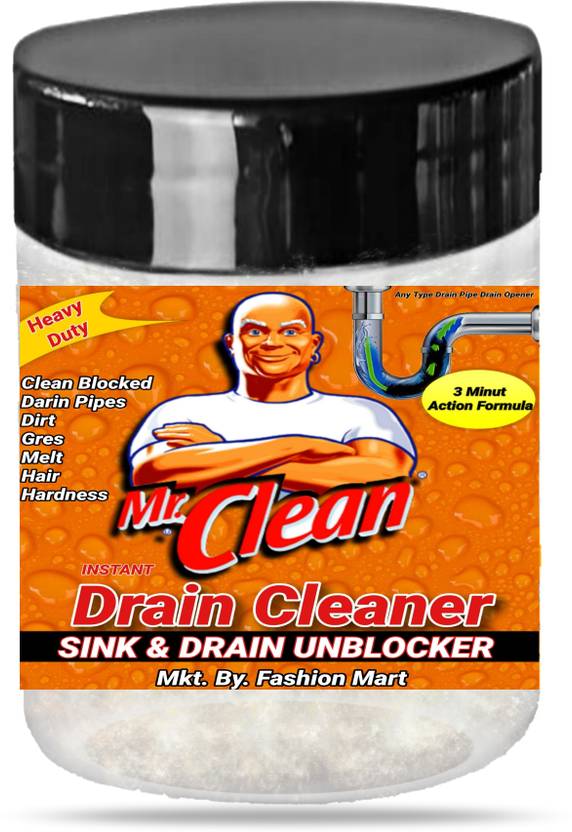




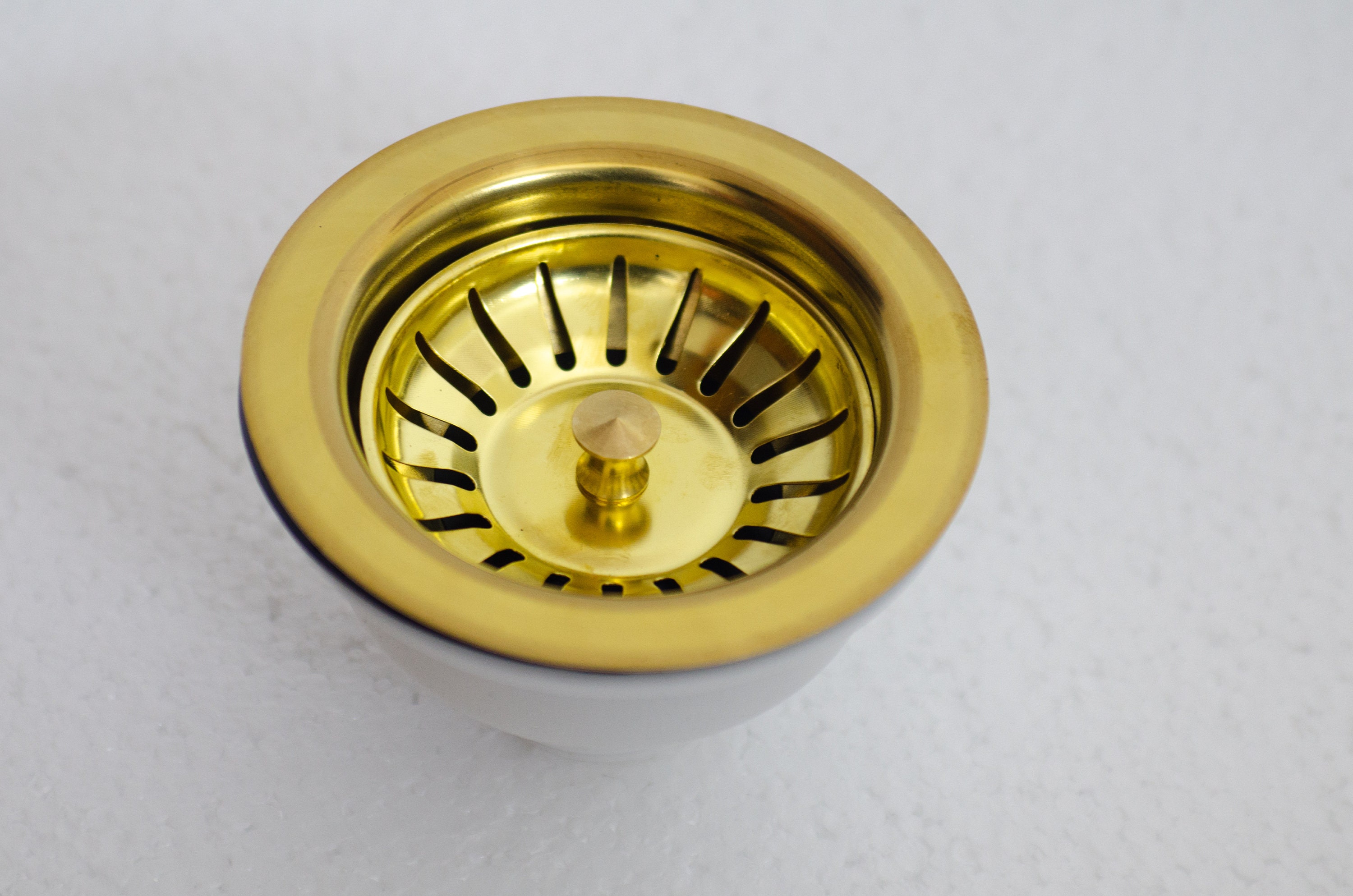



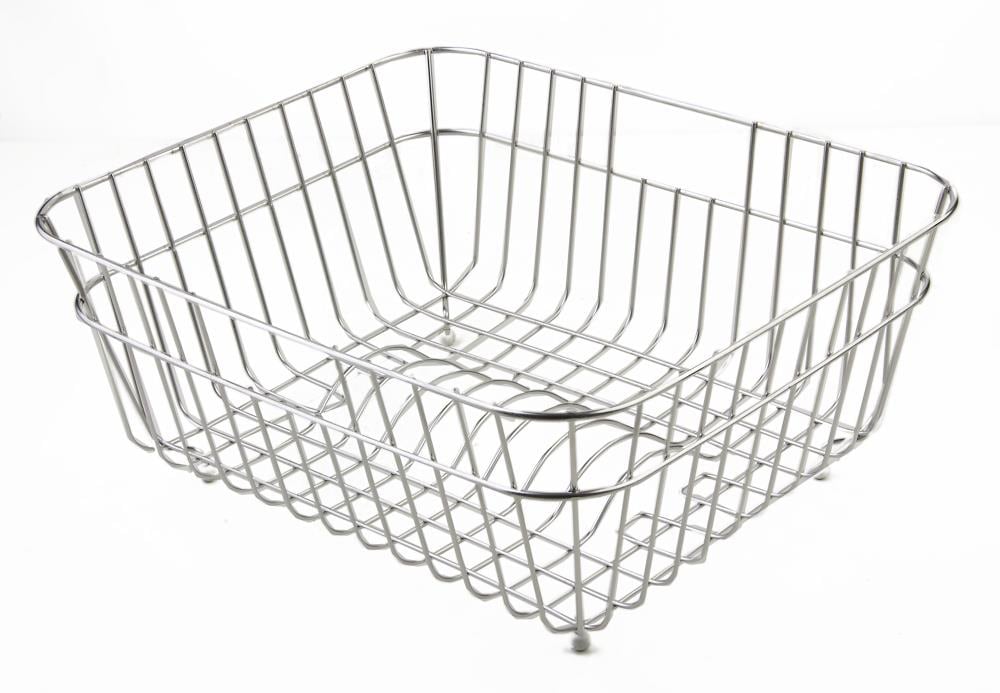
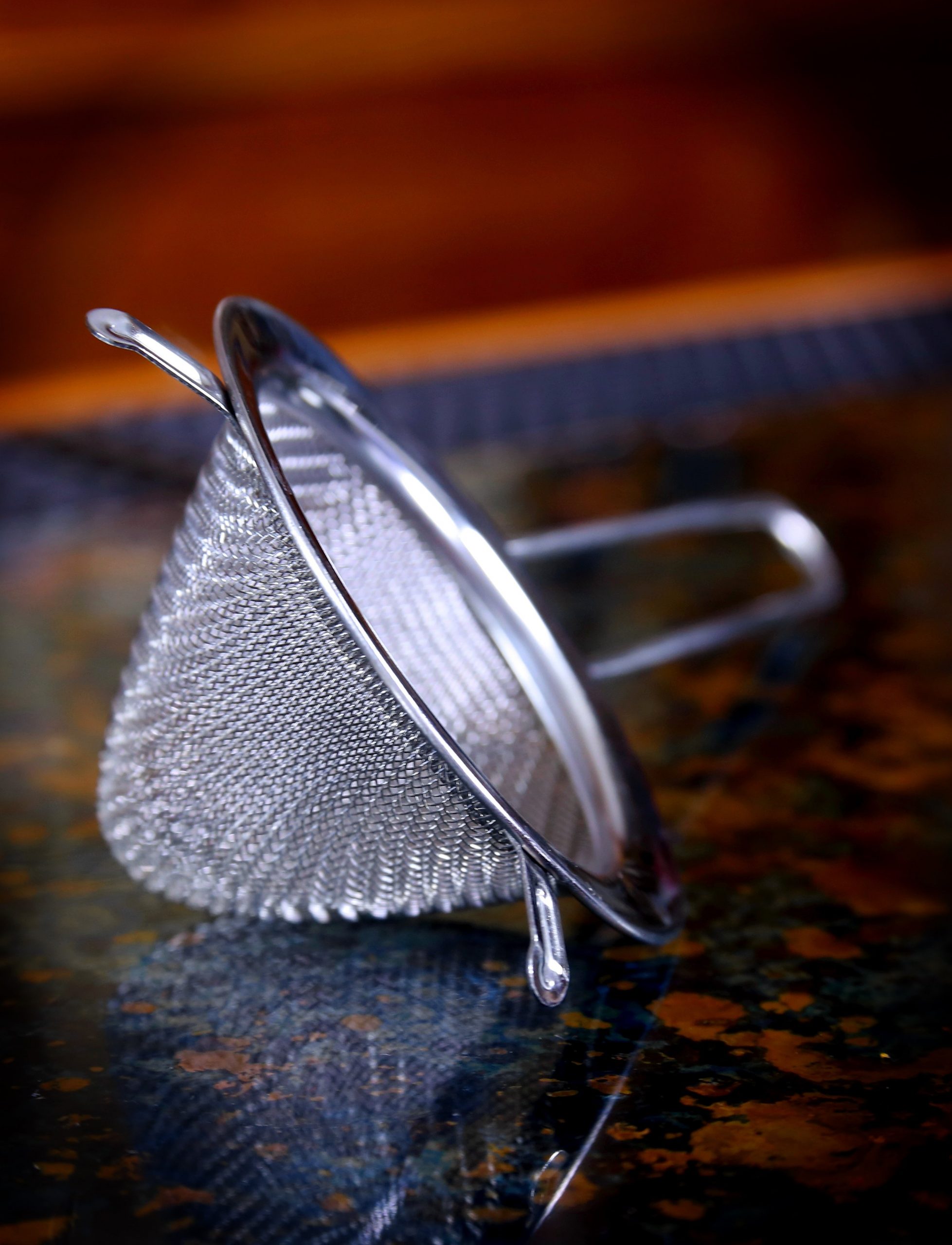





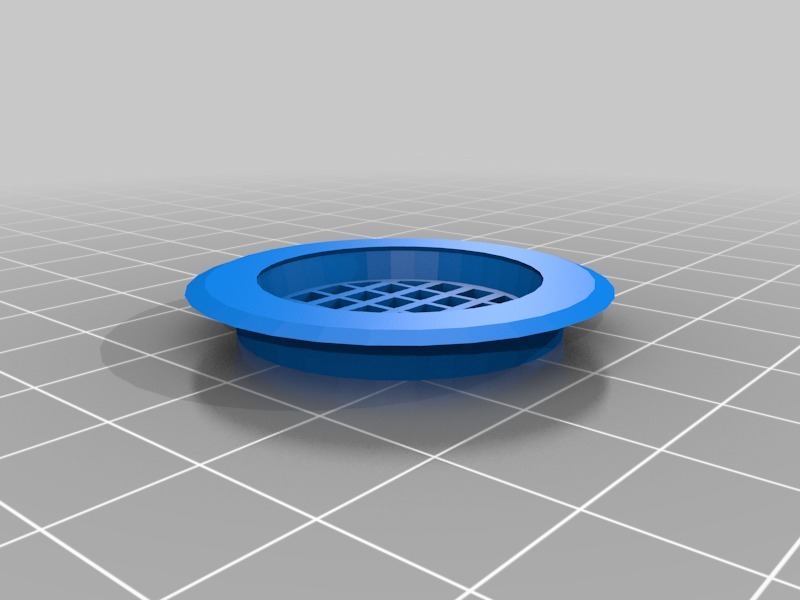








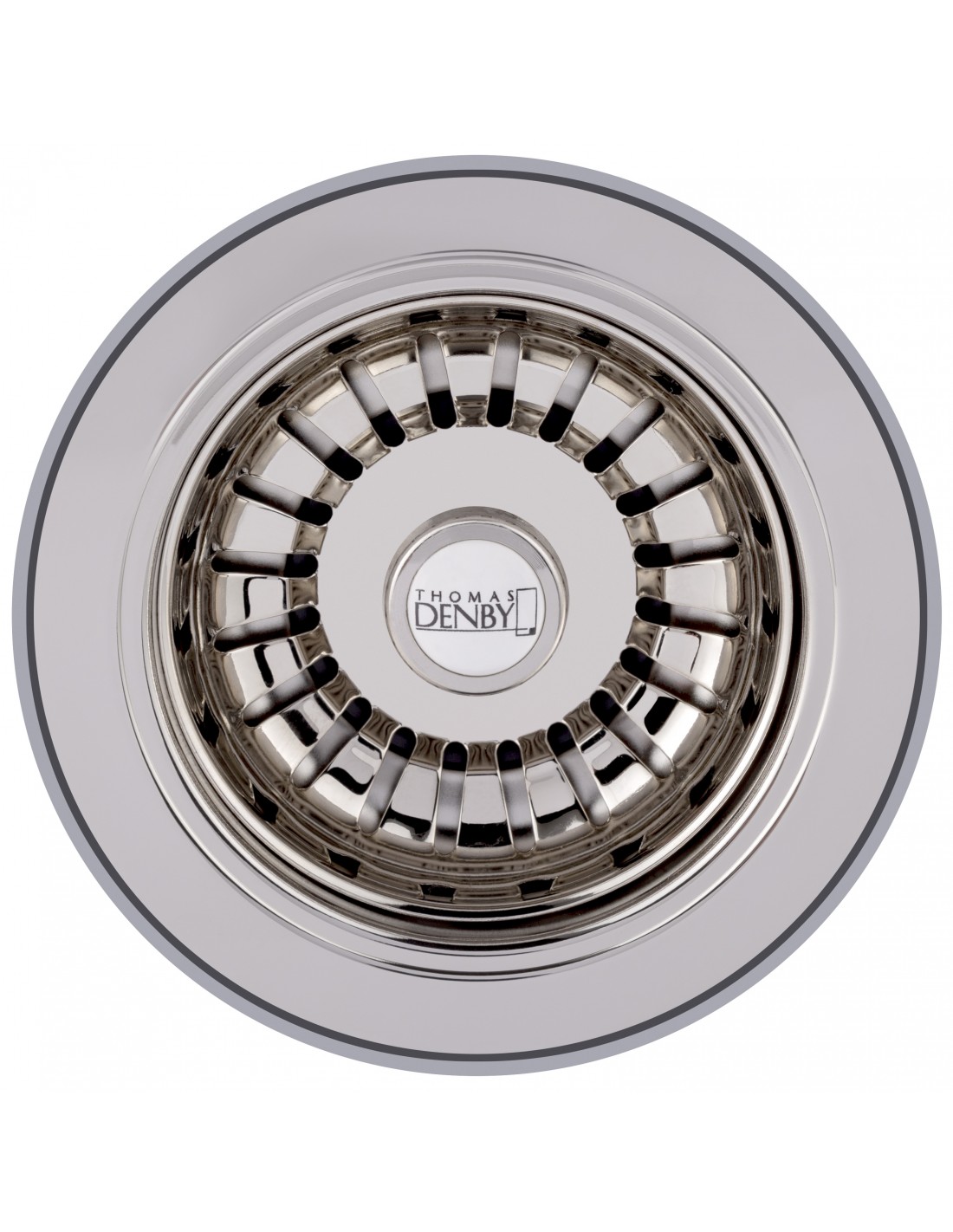


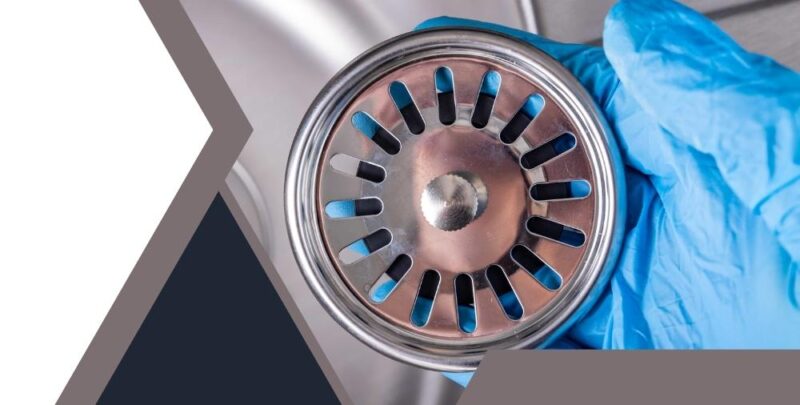
















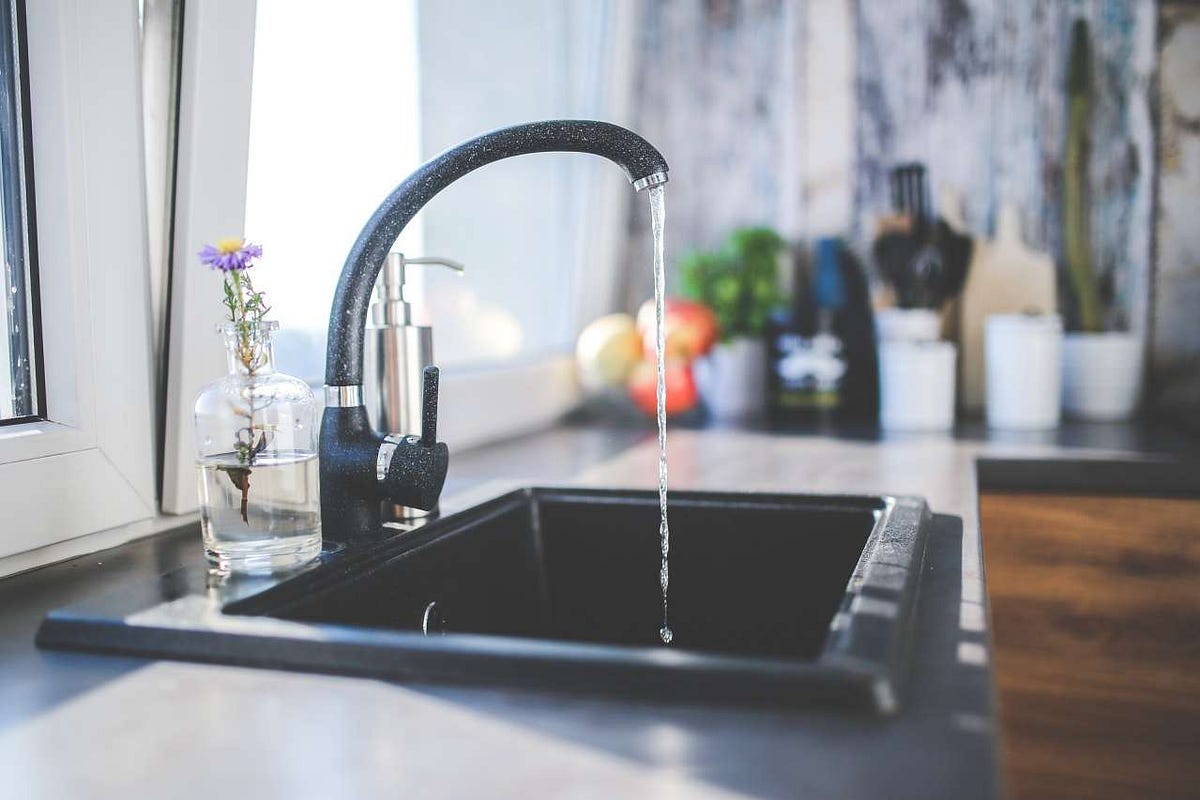




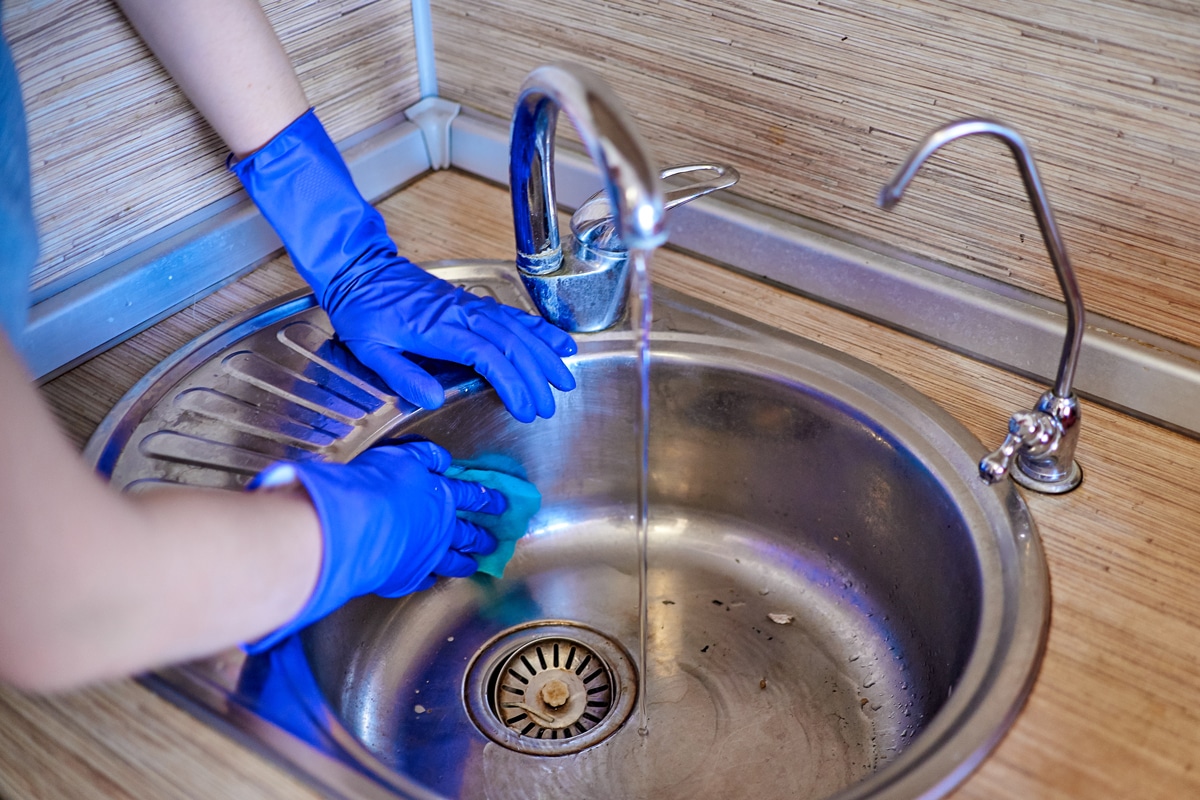


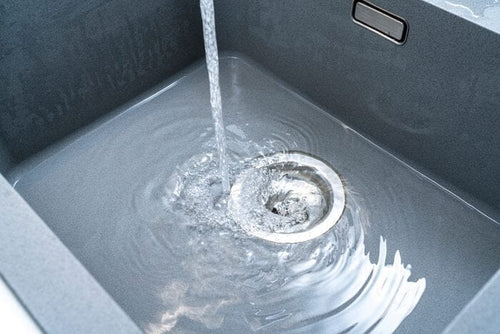



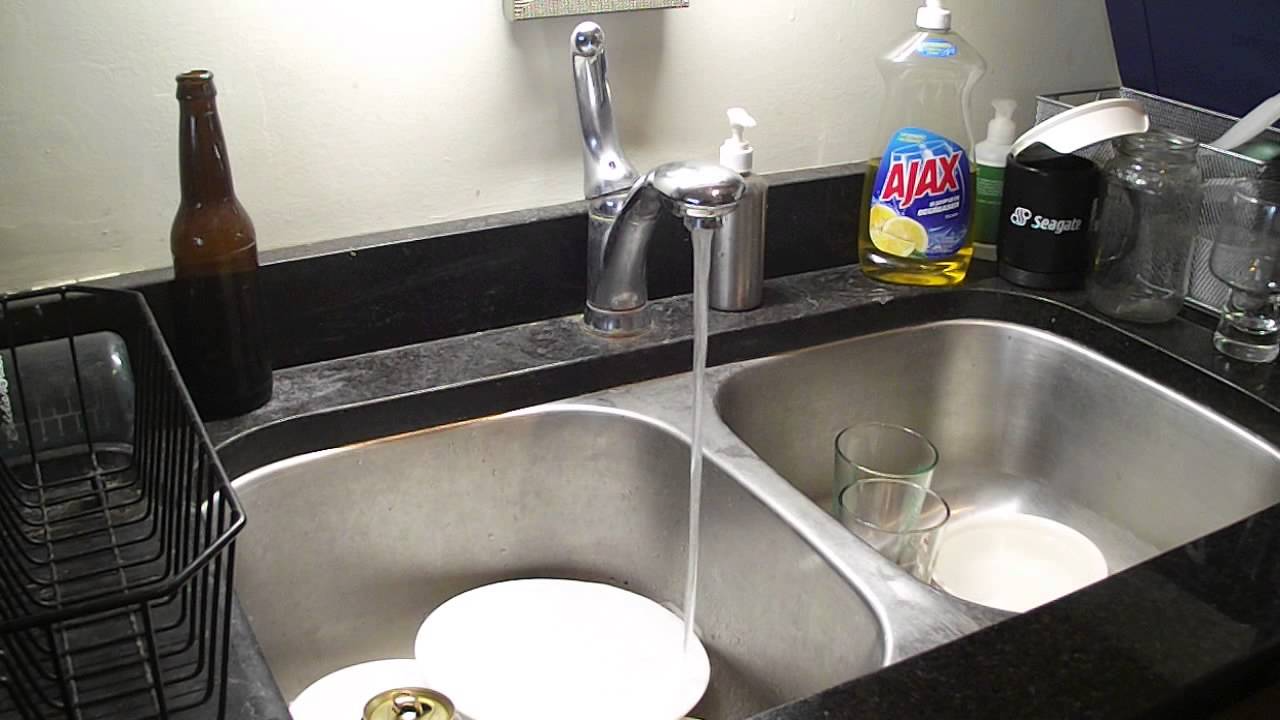


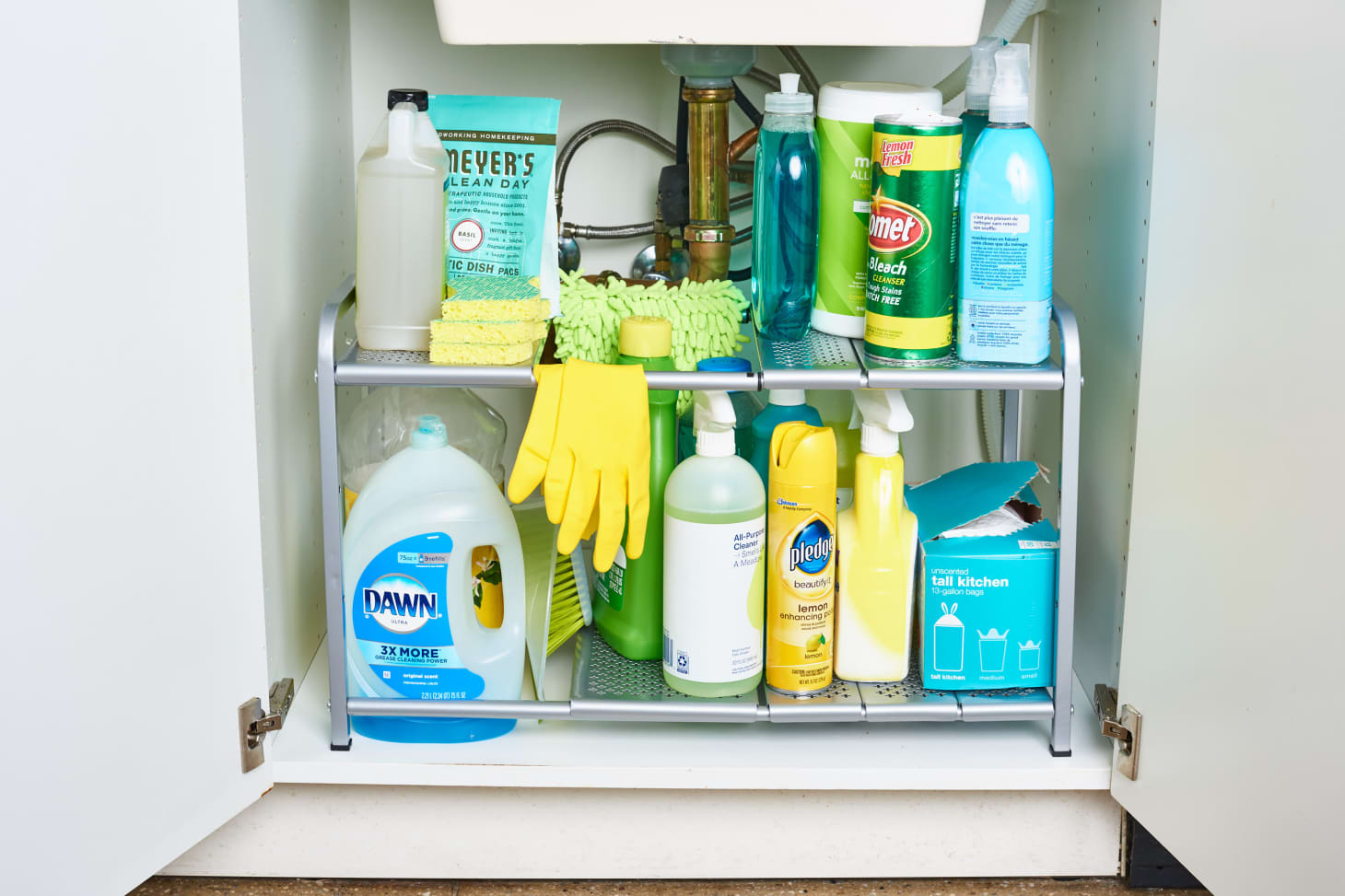
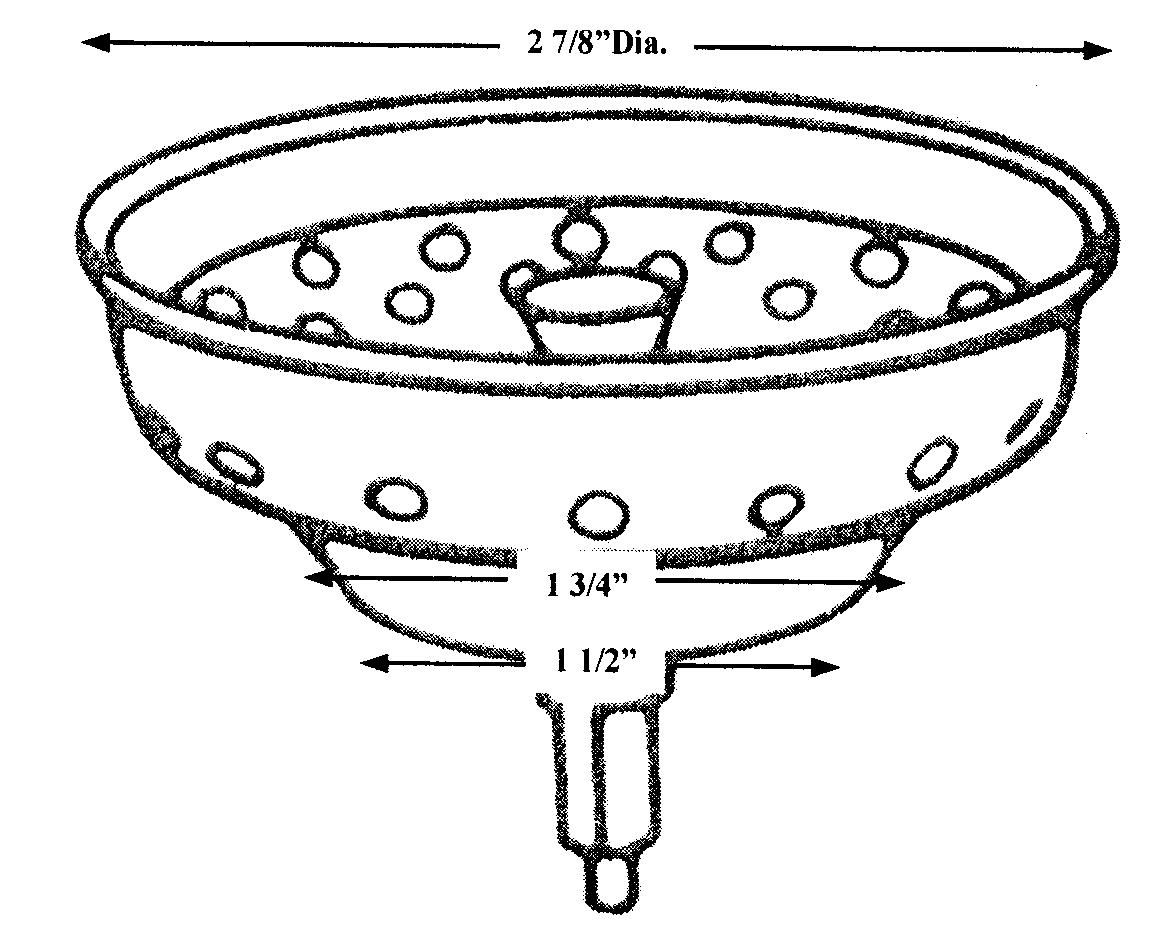


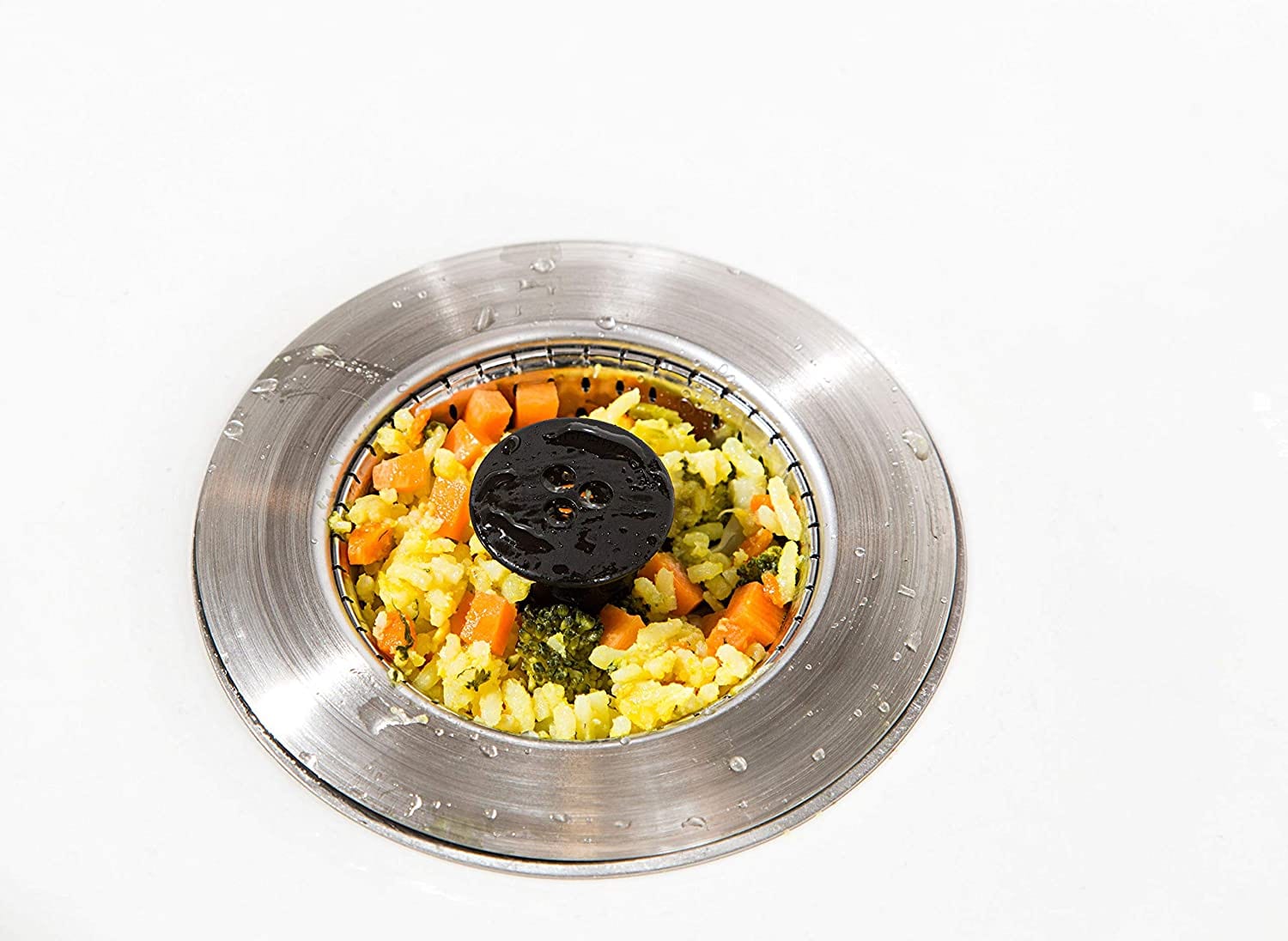

.png)

